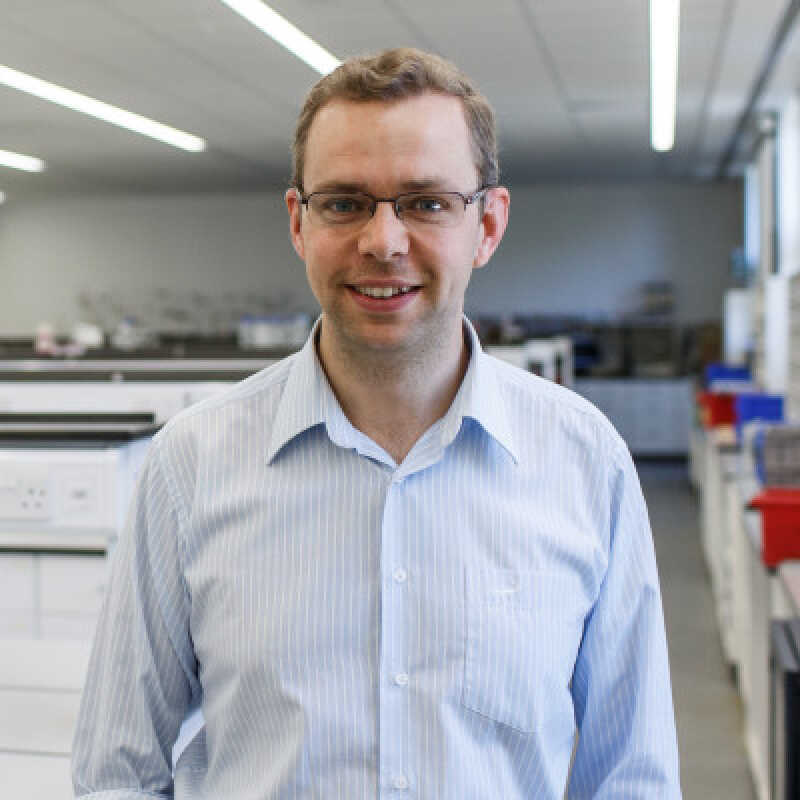- University of Kent
- Chemistry and Forensic Science
- People
- Dr Christopher Serpell
Dr Christopher Serpell


Dr. Serpell achieved his DPhil in Inorganic Chemistry with Prof. Paul Beer at the University of Oxford in 2010. He remained there as an EPSRC PhD+ Awardee, before moving to Prof. Hanadi Sleiman’s group at McGill University, Montreal in 2011 on a Tomlinson, and then a Banting Postdoctoral Fellowship. He returned to Oxford in 2014 to work with Prof. Ben Davis FRS as a Skłodowska-Curie Experienced Researcher within the RADDEL network. He was appointed as a Lecturer in Chemistry at the University of Kent in 2015, Senior Lecturer in 2018, and Reader in 2020. His research is centred on how large molecules interact - the supramolecular chemistry of macromolecules. This includes synthetic polymers, oligonucleotides, proteins, peptides, other biomolecules, metal nanoparticles, and everything in between. For example, his synthetic sequence-defined polyphosphoesters are capable of folding and self-assembly according to their sequence, providing an analogy to the blueprint of proteins.
The Serpell Group works at the interfaces of biomolecular and synthetic supramolecular chemistry, and nanotechnology. Their overarching aim is to exploit the breadth and depth of these fields, forging new links and generating new chemical structures, functions, and technologies.
Sequence-defined polymers
The secrets of life are written in the sequences of polymers: nucleic acids and proteins. Among their attributes, these biopolymers are capable of storing vast quantities of information, catalysing reactions to the diffusion limit with absolute selectivity, creating materials of exceptional strength and resilience, and imparting microscopic and macroscopic motion. In all these cases, it is supramolecular chemistry – non-covalent interactions such as hydrogen bonding, π-stacking, electrostatics, and the hydrophobic effect – that acts as to translate monomer sequence into function and activity.
Dr Serpell and his colleagues are recapitulating these concepts using synthetic motifs by applying solid-phase synthesis in a new way. The non-natural sequence-defined polymers they are generating are capable of programmed folding, molecular recognition, and biological function. They use the automated phosphoramidite synthesis used typically for DNA to produce highly modified oligonucleotides, DNA-peptide hybrids, and entirely non-nucleosidic sequence-defined polymers, for fundamentals of self-assembly, and applications in therapy, sensing, and catalysis via discovery of sequences with high affinity. The Serpell Group collaborates with industrial aptamer scientists and a number of groups in the Kent School of Biosciences on this topic.Drug delivery: Polymer-as-payload
Nanotechnology holds immense promise for improving the efficacy of known drugs by providing temporal and spatial control over release of the active compound. However, most systems that do this contain far more polymer than drug, and this is a problem when a high local dose is needed – for example, in the use of non-steroidal anti-inflammatory drugs for chemoprevention of certain cancers.
The Serpell Group is making polymers out of the drugs themselves, such that the polymers can be formulated into targeted nanoparticles, which will then degrade to release the drug at a controllable rate, at the proper therapeutic site (eg the cancer). A recent example of this is the creation of degradable polymer nanoparticles built out of salicylic acid. The group is expanding this approach to other drugs, and developing collaborations with Malaysia to use therapeutic phytochemicals in this regard.
Biomolecular manipulation
Despite being able to perform tasks well beyond the current capabilities of synthetic chemistry, biomolecules are not magic. Proteins, peptides, lipids, sugars, and nucleic acids all display chemical ‘handles’ which can be used to manipulate their behaviour. Chris and his team are exploiting covalent and supramolecular motifs to provide new ways to detect and purify biomolecules, and translate their unique properties to novel functional materials. A recent example of this is the use of gold nanoparticles as adjuncts in electrophoretic analysis of sulphurous biomolecules.
Funded PhD and postdoc positions are advertised on the group website and FindAPhD. Self-funded applications for PhD study are welcomed - please get in touch by email
Loading publications...
Showing of total publications in the Kent Academic Repository. View all publications